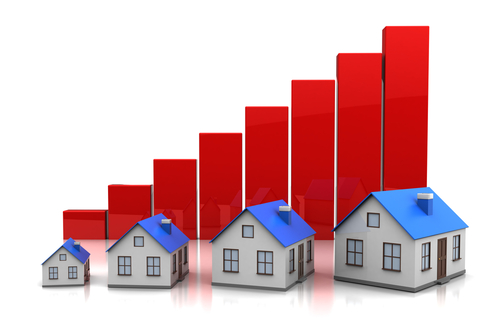According to the National Association of Realtors (NAR), existing home sales continued to trend upward in January. However, a shortage of inventory continues to stifle home sales.
In January, single-family home sales climbed 0.2%, which computes into a seasonally adjusted annual rate of 4.34 million units in January compared to 4.33 million homes in December. It’s also 8.5% above the 4 million units pace reached in January of last year.
NAR’s chief economist Lawrence Yun states that the “tight inventory is a problem.” In fact, the shortage of homes has created a seller’s market in many areas of the country.
Diminishing inventory
While foot traffic for potential homebuyers has increased, the number of sellers placing their homes on the market is “holding steady,” said Yun. He points to a 40% increase in buyer traffic above the same period in 2012. “There is plenty of demand but insufficient inventory to improve sales more strongly,” reports Yun.
At the end of January 2012, the inventory level sat at a 6.2-month supply–25.3% higher than the current supply of homes. Last month, the volume of previously owned homes dropped to 1.74 million units—a 4.2 –month supply. The inventory dropped 4.9 % compared to December and a 4.5 month supply.
The January 2013 figures show the existing housing stock at its lowest point since reaching a 4.2 month supply in April 2005.
The actual number of homes for sales dropped to the lowest volume in nearly 13 years. At that time the inventory level plunged to 1.71 million-units.
Even with a seasonal increase in inventory come the spring, the NAR does not expect the supply of homes to have much of an effect on faster than normal home price appreciation or bidding wars for homes taking place in certain locations around the country.
Other existing home sales data
NAR data shows that sales for previously owned homes increased in the South, Midwest, and Northeast regions. The West region experienced a decline in sales activities. In total, single-family homes, condominiums, and townhouses climbed 0.4% in January compared to December.
This extrapolates into a seasonally adjusted 4.92 million pace and higher than the downward revision to a 4.90 million annual rate in December. Overall sales for January rose 9.1% higher than the 4.51 million-unit rate recorded for January 2012.
Fewer foreclosures and short sales transactions took place in January. In January 2012, distressed property sales comprised 35% of the existing home sales volume. By December 2012, the percentage of distressed home sales fell to 24%. Last month, the volume of foreclosures and short sales dipped to 23% of total sales for previously owned homes.
The median time it takes to sell homes fell from 73 days in December to 71 days in January. On a year-over-year basis, the median time on the market declined from 99 days. The median sales price for existing homes climbed $174,100—up 12.6 from January 2012.
According to the National Association of Realtors (NAR), existing home sales continued to trend upward in January. However, a shortage of inventory continues to stifle home sales.
In January, single-family home sales climbed 0.2%, which computes into a seasonally adjusted annual rate of 4.34 million units in January compared to 4.33 million homes in December. It’s also 8.5% above the 4 million units pace reached in January of last year.
NAR’s chief economist Lawrence Yun states that the “tight inventory is a problem.” In fact, the shortage of homes has created a seller’s market in many areas of the country.
Diminishing inventory
While foot traffic for potential homebuyers has increased, the number of sellers placing their homes on the market is “holding steady,” said Yun. He points to a 40% increase in buyer traffic above the same period in 2012. “There is plenty of demand but insufficient inventory to improve sales more strongly,” reports Yun.
At the end of January 2012, the inventory level sat at a 6.2-month supply–25.3% higher than the current supply of homes. Last month, the volume of previously owned homes dropped to 1.74 million units—a 4.2 –month supply. The inventory dropped 4.9 % compared to December and a 4.5 month supply.
The January 2013 figures show the existing housing stock at its lowest point since reaching a 4.2 month supply in April 2005.
The actual number of homes for sales dropped to the lowest volume in nearly 13 years. At that time the inventory level plunged to 1.71 million-units.
Even with a seasonal increase in inventory come the spring, the NAR does not expect the supply of homes to have much of an effect on faster than normal home price appreciation or bidding wars for homes taking place in certain locations around the country.
Other existing home sales data
NAR data shows that sales for previously owned homes increased in the South, Midwest, and Northeast regions. The West region experienced a decline in sales activities. In total, single-family homes, condominiums, and townhouses climbed 0.4% in January compared to December.
This extrapolates into a seasonally adjusted 4.92 million pace and higher than the downward revision to a 4.90 million annual rate in December. Overall sales for January rose 9.1% higher than the 4.51 million-unit rate recorded for January 2012.
Fewer foreclosures and short sales transactions took place in January. In January 2012, distressed property sales comprised 35% of the existing home sales volume. By December 2012, the percentage of distressed home sales fell to 24%. Last month, the volume of foreclosures and short sales dipped to 23% of total sales for previously owned homes.
The median time it takes to sell homes fell from 73 days in December to 71 days in January. On a year-over-year basis, the median time on the market declined from 99 days. The median sales price for existing homes climbed $174,100—up 12.6 from January 2012.







